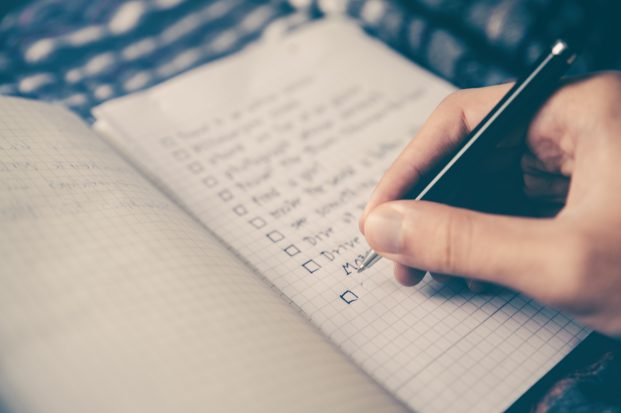User research is a tough gig. There are many things that can trip you up, or cause a whole lot of heartache. In this article I’ve sought to compile a list of practical tips and tricks, as well as the common pitfalls I’ve come across over time. This list represents many hours of toil from working on a variety of large and small field research projects.
I won’t go into the details of what ethnographic research is – I’m sure that if you found your way here, you’re not a beginner. But in case you need a refresher, or are perhaps a particularly keen novice, you can read more about what it entails here.
“Ethnographic research is the systematic study of people and cultures.”
Anything where human beings are involved is prone to stuff going wrong. This article is for those wanting to avoid that happening, by improving their process, efficiency, and field work preparation.
Practical Tips
The list below is borne out of the face-palm moments I’ve had in the past. The genuine ‘doh’ moments when something agonisingly simple was forgotten or not realised. Perhaps there are some ‘aha’ moments in here for you too.
Take your business cards
Participants always want to send you that thing they couldn’t remember, screenshots of that issue, or the contact details of Dennis from administration that they want ‘looping in’. I always invite participants to continue contacting me after the field visit as this is great for rapport.
Take a staff list
Not doing this is the equivalent of turning up to a job interview without knowing anyone’s names, job titles or what the company does. You’re a researcher – so do your research! If it’s a public organisation, you can usually get a ‘meet the team’ list from their website and print it off. This is great for building rapport, and speaking to the right people (possibly the ones you didn’t even know existed).
Take a spare pen or 5
This is obvious. But when you’re preoccupied with travel, remembering various bits of kit and the right charger for the right bit of tech (also, don’t forget your chargers) remembering an innocuous bit of kit like a pen can go out the window. This leads me neatly onto…
Make a checklist
There are things you take as standard each time you do a field visit. Pens, notebook, mobile phones, charges, laptop, camera or phone, phone charger, business cards, maps, travel tickets, water, snacks, scuba gear (ok not that one) the list is often pretty vast when you have to write it all out. Before I leave for a visit, it’s part of my routine to check everything off the list to give me peace of mind.
Create Cheat Sheets
It’s hard to talk and write down the deluge of interesting information your participants will be giving you. Ideally, you will be recording the session anyway (if only just the audio, video can be distracting for the participants), but I always find you still need to take some notes. It might be that you still need paper and pen for mapping the physical environment (floorplans, locations of amenities etc), and creating a cheat sheet with areas to draw this or circle words/ phrases is quicker than trying to write these things out.
Eg: “Workplace is dress down and relaxed culture” is slower to write while maintaining a conversation with a person, than circling one of these:
Culture: [Formal] – [Smart casual] – [Casual]
Snacks for you
Sometimes you will be there for hours, and if you’re like me, I find focussing for long hours without food is tricky. It sounds trivial, but I can’t give my best when I’m hungry, so I always make sure I have something small with me to tide me over. It’s often the case you are working around other people’s schedules and therefore lunch is overlooked.
Snacks for them
Leverage the reciprocity principle and take them biscuits or something indulgent that many people can share. This is also common courtesy and shows you are grateful for their time.
Empathise
Give people a reason to help you. If you are in the field of ethnography and user research, you are probably already a highly empathetic individual and converse with humans well. Well done, you’re off to a great start, it makes user research all the more interesting and rewarding.
Get to know them outside of the current domain and environment
This sounds obvious, but they are not in that current environment in isolation. A store assistant you are observing at work does not live there (or perhaps they do, which surely presents an even stronger case for asking). They have family and friends that shape who they are, and how they behave in that workplace. It’s beneficial to show an interest in what they do for leisure, or who the people in the frame on their desk are. It’s a great rapport builder.
To take this even further, if you can talk about yourself, it establishes a ‘give and take’ relationship. If you give something of yourself, no matter how trivial, participants are much more willing to be open with you in return.
Take other non-UX people
I have to admit, I was against this idea at first. I didn’t want them interrupting, leading the participants astray or asking the wrong questions. Of course, all of this happened anyway, I’m not going to lie. But something more interesting happened, the people who came along got excited about user research. They told other people. Those other people wanted to come along. Buy-in for user research and UX activities increased, and a design culture began to flourish. It can also be lonely travelling on your own, and in general, it’s safer travelling to meet other strangers with someone else. Also, I now had dedicated notetakers, which is a massive win if you ask me.
People who you could be taking: Managers, CEO’s, developers, project managers, testers, customer support, marketers, copywriters, basically any stakeholders will always pay off.
Be Cheeky
Once you get back to the office, it’s difficult to relay what you saw, heard and learnt. I found the best way to deal with this is to take photos, videos and audio recordings of the surroundings, participants and artefacts (checklists, whiteboards, calendars, post it’s etc) observed during the field visit. This can be a little uncomfortable, but as long as you ask nicely I’ve always found participants to be really keen to help out.
Let participants explain why they think, feel or do something
This is a hard one to get your head around at first. It’s too easy to make assumptions. You’re the researcher, right? You can make an educated guess why they don’t like a particular screen design, or perhaps enjoy eating a certain brand of chocolate bar? Wrong! You are not the subject. It’s impossible – and reckless – to try and transcend yourself and be entirely inside someone else’s head. It’s your job to probe and ask the open ended questions that will help you understand more about that person. You can start off with The 5 Whys, a great technique for getting to the root of why a person thinks, feels or does what they do.
Gotchas
Have a scripted intro to your study
The first time I went out on a field study, this didn’t even cross my mind until I went to shake hands with the person I’d gone to see, and they said “So, what is all this for?”. Cue much stuttering and garbled explanations about ‘user experience’ and ‘knowing the user’ and ‘creating something awesome’. People outside of our field (and they will be outside of the UX field) won’t have a clue what user experience means. It’s much easier to have a sentence prepared that can provide a reason for you being there, what their input means and how/who it gets fed back too. Also…
Make it clear you’re not a spy
Some people are pretty concerned about a person turning up and studying what they do. I don’t blame them, so I make it a priority to allay any fears. Sometimes your contact does a bad job – or no job – of telling the other participants who you are or why you’re there. I realised this when I had to come out with things like “No I’m not spying on you for your boss. I won’t tell anyone what you told me, it’s used in my organisation internally to make a better product. No, I’m not assessing your performance.” These are valid concerns, so make sure you take care of them at the start or people will not open up to you.
What is the relationship
When you are visiting an organisation or client linked to your own one, it’s possible there is some form of history there, good or bad. In one case, I hadn’t checked the history of a particular company before my field visit, and it turned out they were pretty upset with us. It was an uncomfortable visit and taught me to speak to everyone you know (customer services, sales teams, key account managers) to see what issues they may have outstanding, so you can talk about them with empathy and knowledge, rather than a blank, panicked look as I did.
Make it clear you’re not here to fix stuff
As I mentioned above, your main contact for the field visit may not have told everyone what you are there for. This Chinese-whispers style chain of communication can cause lots of confusion about your actual role…
Participant 1: oh, we have someone coming to talk to us about that software we use today
Participant 2: Really? Oh, it bugs me that I can’t get it to print this report properly
Participant 1: I’d ask them about it
Participant 2: I’ll see if they can fix it for us while they’re here
Me: Sorry I’m just here to observe you
Participants: ???
Aim for participant diversity
I’m not talking about the individual participants’ background, such as gender, ethnicity and so on, although this is important to aim for too. Unless you screen and recruit all the research participants yourself, you may be relying on the organisation or client to give you some names and contact details to start calling to set it all up.
It became apparent to me at the start of my research career that sometimes I was getting ‘the favourite client’ or ‘the best buddy’ or ‘The highest paying account we want to impress’. This is a bad idea. Speak to participants that have varying strengths of relationships with the organisation you’re working with.
Ask questions about the past
This is the same as the advice I would give for user testing script writing. Don’t ask about vague or future behaviours, we are terrible at predicting and verbalising these. The first time I asked a participant “What is your daily routine”, I inwardly cringed because it was obvious as soon as I said it, and even more obvious when they said, “I turn up and just try and get my jobs done”. Ack. Cue tumbleweed moment. Not many insights to be gleaned there. There are better ways to ask this:
Tell me how your day went yesterday, how did it start off? And then…?
Describe the last bad/good day you had….why was it bad? How did you deal with it? How did you feel?
Take some overnight stuff for long-distance field visits
The days can be long. Sometimes you don’t want to interrupt the participant when they’re talking about something really interesting and it’s possible you may miss your train (or other transport) back home.
Conclusion
User Research and Ethnography can be a fraught business. But with the right preparation and foresight, it doesn’t have to be, as we have seen above. Have you got any user research tips or tricks you practise? Drop me a line on twitter and let me know.




